
The media love extreme weather; hottest ever, killer vortex, 100 days of snow and powerful gusts. We have wind speeds and also wind gusts. They are not the same they should not be conflated. You can see the appeal for headlines clicks. Why have paltry gales of 40mph when you could have a gust of 70mph or even better over 100mph without mentioning the location or height of the weather station. In the weather forecast we may talk of a light southerly, fresh westerly or a strong north-westerly wind but what is the difference between the mean wind speed and a sudden higher gust?
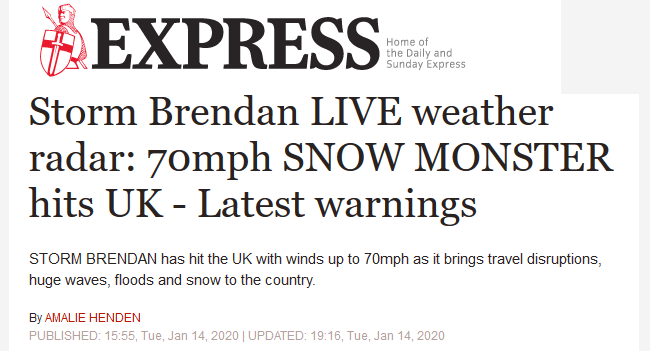
Wind is moving air. Air moves because of pressure differences. Air at the surface will want to move from an area of high pressure to one of lower pressure. The higher the pressure is, the heavier the mass of air above our heads, with air gently sinking. In low pressures, the air is rising away from the surface. Air needs to move to equalise this difference, hence we have winds. Force = mass x acceleration (a = gravity) Pressure is that force /area in millibars or hectoPascals hPa.
Winds are measured in mph or knots here in the UK at a height of 10 metres. Met Eireann use km/h just to be aware of that in the ‘Name our Storms’ project. In the wind image below there is a widespread yellow warning for Wind with land gales but also an Amber warning for SE England (StormCiara) with coastal gusts of 70 to 80mph forecast.
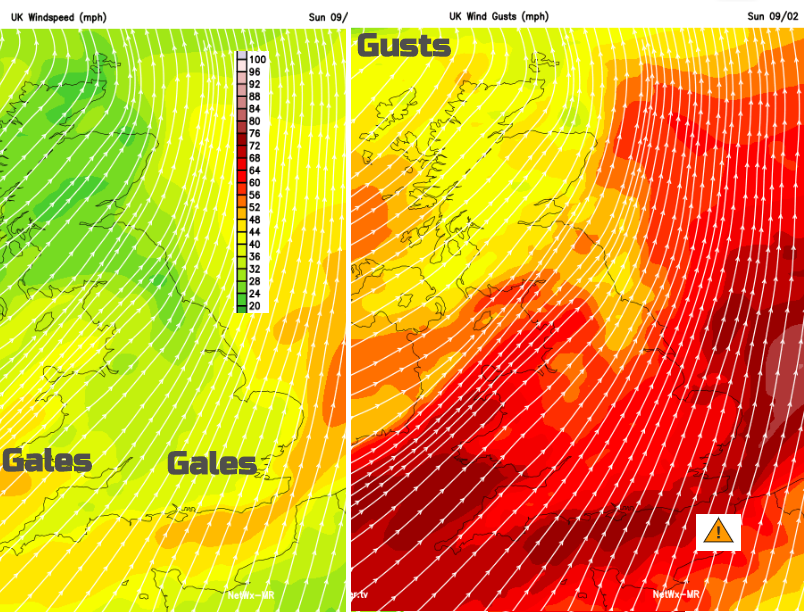
So, over a smooth surface, such as calm waters, air flow at 10 metres height can be relatively steady and even. We measure it over 10-minute intervals and that is the mean or sustained wind speed. A deep low pressure will bring strong winds and gales, hurricanes and typhoons result in devastating winds. In the northern hemisphere the winds are anticlockwise around a cyclone. In the middle of a large high pressure, there will be calm conditions with barely a breeze, outer winds move clockwise around the high.
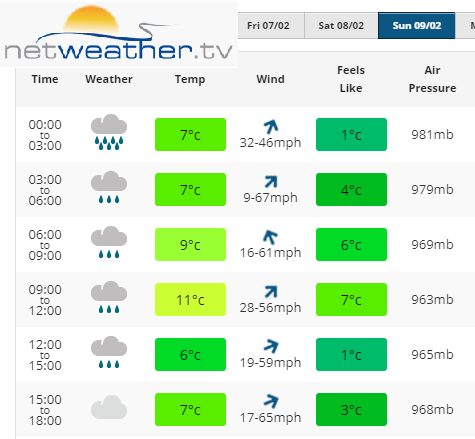
If you look up the wind speed on your weather app or see the wind arrows on a forecast map, they will usually show the mean wind speed for that time frame. If it is an easterly wind, it comes from the east. If you would have your back to the east but if you walked west, you would be moving with the easterly wind. They will also show a higher figure, the forecast maximum gust.
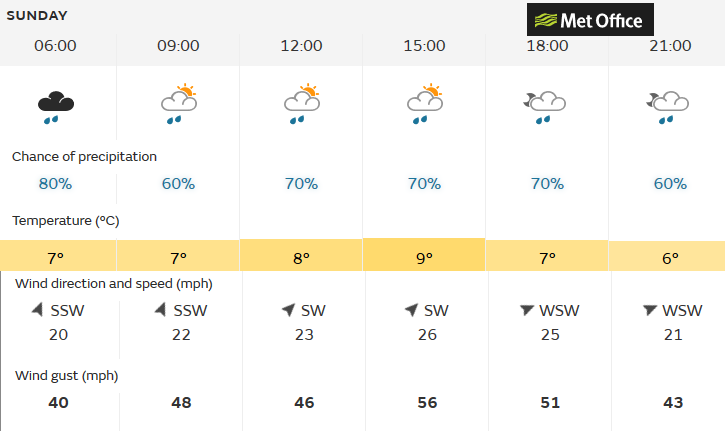
A wind gust is a sudden temporary increase in ongoing wind speed. “Wind speed refers to the average speed over a given period, while wind gusts are a rapid increase in strength of the wind relative to the wind speed at the time.” Met Office
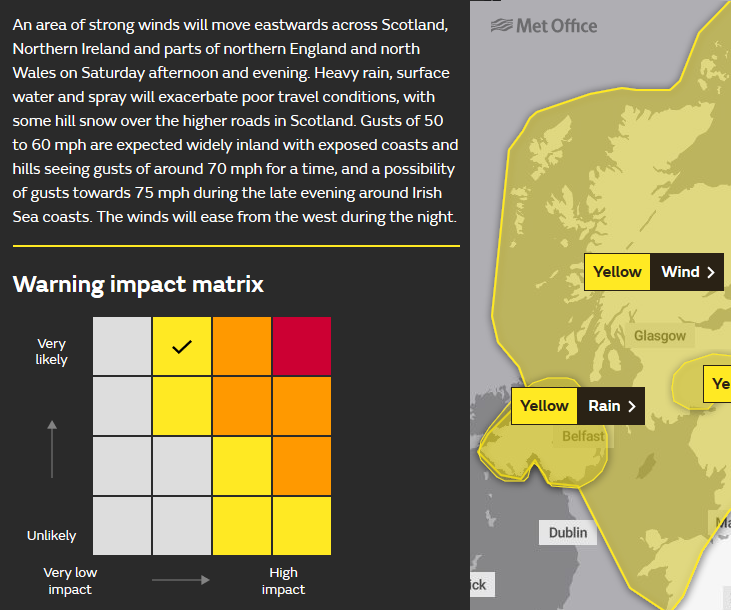
There are forecasts charts for wind gusts, and these appear in the warnings “Gusts of 50 to 60mph are possible, 70+ for exposed coasts”. The BBC show these with black arrows, there are separate Netweather charts showing gusts and also the mean wind speeds.
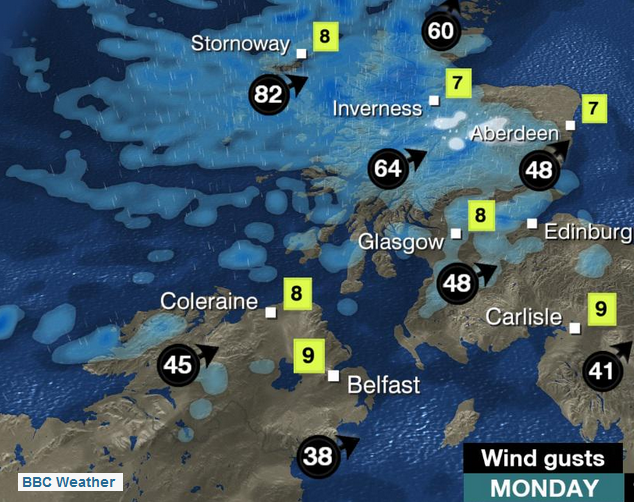
Gusts are caused by turbulence from wind shear, friction (from the surface that the air is passing over) or instability in the air (from say surface heating from the sun). More unstable air flows tend to be more gusty.
Any combination of these can cause the speed of the wind to increase significantly higher than that of the mean speed. Driving along an exposed road in brisk winds is one thing but as these sudden violent gusts hit, that is when lorries topple or vehicles can swerve. The gusts are dangerous for hill walkers and yacht sailors and can catch out city folk out for a lunchtime walk, trying to remain upright.
“The gust speed and direction are defined by the maximum three second average wind speed occurring in any period…overall wind intensity is defined by the average speed and direction over the ten-minute period leading up to the reporting time. Mean wind over other averaging periods may also be calculated.” Met Office
Highest ever wind gust: Away from the mountain sites, the highest UK gust was 144mph recorded at Fraserburgh Aberdeenshire 13th February 1989. There had been heavy showers with hail and thunder.
“At Fraserburgh, the mean wind speed increased very rapidly from 15 knots at 1730 GMT to 60 knots at 1900 GMT as the wind direction veered from south-westerly to north-westerly, a record gust for a low-level station of 123 knots was measured: the hourly mean speed was 66 knots. The high winds disrupted traffic and brought down trees as far south as Leicestershire and North Wales, with buses and high-sided lorries blown over. In Dunfermline, Fife Region, nine people were injured when the roof of a hospital ward was blown off.”
The strongest ever UK gust was 150.3 knots (173 mph) recorded at Cairngorm Summit on 20 March 1986. The top of Cairngorm is 1245m high. Some newspapers like to quote Cairngorm gust values as a headline value of wind speed. Sustained mean wind speeds and gusts are different. The top of a Scottish mountain is not representative of what most people will experience in a storm.
The topography of the British Isles also influences the winds. There can be high gusts to the lee of the Pennines, much higher value gusts over the Scottish mountains. If you imagine the flow of air coming in from the Atlantic as lots of little air parcels, when they come up to the mountain ranges, they are forced upwards or around the mountains. Interrupting the relatively even straight flow causing congestion and so pressure changes.
Once up over the top, the air then tumbles down the other side with considerable distortion of the flow. In stable situations, the undulations continue well downwind with significant gusts to the lee of high ground.
When looking at the forecast or warnings remember the ongoing wind speed is one part and the other is the possibility of gusts up to a certain value, the sudden short-lived interruptions of stronger winds.
Loading recent activity...